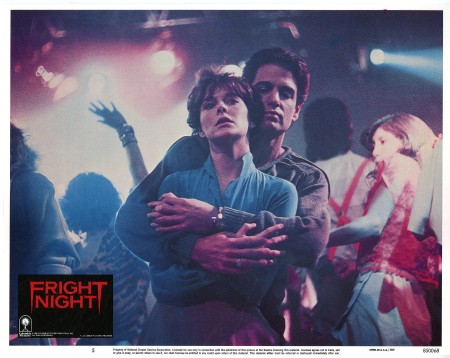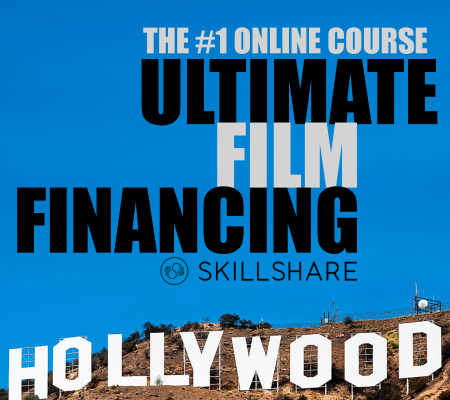A zombie virus wipes out mankind and two people have to survive in the city. Horror ensues.
Five teens go spend the weekend in a cabin lost in the forest and meet some murderous inbred savages. Horror ensues.
A couple and their two kids move into a new home and discover it used to be the place where a murderer tortured and killed his victims. Horror ensues.
These are generic concepts we see every day in the horror genre. Every year, the Marché du Film in Cannes, the European Film Market in Berlin or its American counterpart, the American Film Market in Santa Monica welcome new films showing these same concepts. In a way, this is the industry protecting itself. How? By giving the market films it is familiar with. Films that work with an audience that wants them. Films that can be bought and sold with the eyes closed. And sequels where the same principle apply: the same of what you’ve seen in the first film, but a little tweeked to make it more spectacular. Depending on how much those films cost, what stars they have or who’s selling them, some of those films will make money. Some will break even; a few will make millions – ensuring that next year more films will try their luck.
However, of the hundred horror films that get made every year, only a handful of them have the courage, the brilliance, the vision, the guts or the sheer stupidity to try a new concept. But what is concept and why does it matter?
Until 1968, zombies were quite a dull thing: people who are controlled by someone else. They could be dead, they could be alive, it could be voodoo, it could be a spell. Zombies were nothing to brag home about. Yes, Doctor Caligari was great, but let’s face it, zombies were dull. Until George A. Romero came and tried a new concept: let’s make the fresh dead come back to life in order to kill and eat the living. They were not ghouls – ghouls eat cadavers, they don’t usually need to kill the living. There are plenty of corpses everywhere. They were not vampires either. Vampires are cool and don’t decompose.

They were something else. Certainly, Romero did not create anything from the void. Richard Matheson’s I AM LEGEND (1954) explored a similar concept with key differences. The uniqueness about Romero was that he gave the “kinda new” yet incomplete concept its final form with all the characteristics and elements we see today, nearly 50 years later. Romero gave us a mature concept that was so good, came such at the right moment, that a full sub-genre was born. Ten years later, DAWN OF THE DEAD, perhaps the best zombie film ever made (and one of the most discussed), gave us the acknowledgement that the sub-genre was as maturated as vampires, ghosts and other sub-genres. Three thousand zombie films later, we still find ourselves going back to Mr. Romero’s work for reference, homage or just to steal a few ideas.
So, concept is a thing horror filmmakers should think about with lots of care. “Do I have one?” – is the question we should all ask ourselves. “Or am I just reproducing something we already have plenty of?” It’s true that concept alone will not make a great film (or even a successful one at the box-office). However, a rich concept is the kind of thing that lingers long after the average zombie/slasher/found-footage had their run, making some quick money before being forgotten.
There is nothing wrong with a humdrum zombie film made just because you had a Canon 5D and a group of friends with spare time. Anyone who has made a film knows how hard it is to make even those films!
What I am talking about is of having a strategy towards your audience and your career. Here, spending some time reading and getting inspiration, writing, rewriting, going back and forth with your synopsis… that’s where you might discover the possibility of making the investment on a great (or just good) concept. So you don’t believe me? Take a look of some of the most beloved horror films and you’ll see – before anything – a great concept:
1 – A teenage boy discovers that a vampire has just moved into the house next door.
Do I have to tell you what film I am talking about?

The biggest hit of 1982 was a film about a boy who befriends an alien who’s stranded on Earth (great concept by the way!) But one of the most celebrated horror films ever(!) also came from that year and (it’s said) flopped at the box-office:
2 – A team of scientists in Antarctica encounters an alien creature that mimics anything.
And before anyone can say that Norris’ head becoming a spider is the thing… well… that’s all driven by the concept. THE THING (1982) is not original. As we all know, it is a retelling of THE THING FROM ANOTHER WORLD (1951), in turn an adaptation from John W. Campbell Jr.’s 1938 novella WHO GOES THERE? A great concept becomes timeless!

Concept has value. Sometimes that value is recognized right away by both the audience and the box-office. Other times it takes a little longer. Not having a great concept is the thing we should all fight against.
Now the bad news.
The film industry in general is as dynamic as it is conservative and this is not just a Hollywood problem. Conservatism and fear are everywhere. The vasts amounts of money needed to make, promote and distribute a film (any film) and the risk that’s inherent to the intangible nature of films makes us all very cautious and risk-adverse. That’s why the brainless repetition of tired concepts (OMG, the zombies are taking the world! – duh!) and their sequels many times get made while great concepts lag in development Hell for years until a courageous knight comes to the rescue.
Yes, that’s the big film finance paradox: everybody is complaining about the quality of most films, but a) keep consuming them anyway and b) fear that a new concept may be too new and may not find its way through the audience.
It has always been like this and it will never change.
But we, who insist in creating out of the box, can (and must) fight back!
We can produce promos, proof of concepts, test footage, mock up campaigns; we can submit the project to markets, take it with us to workshops, pitch it, pitch it, pitch it and pitch it again… anything goes when it comes to get market validation. Give yourself a deadline – like one year or so – after which you sit down and realistically assess your project’s traction. Then you’ll see if you have a potential winner or if it would be wiser to invest your creativity in another concept you think it is as good or better.
Now let’s get to the good news.
If you are enjoying this article, please consider taking my online course ULTIMATE FILM FINANCING, available on Skillshare and Udemy. Click on the image below to see it.

The good news is great concepts don’t die. If you’ve got to the end of your journey and feel you reached a dead end, well, put it in your “drawer of concepts” (the most important and cherished secret place in your office) and develop something else that you have that’s equally amazing. Keep fighting and developing great stuff (and filling your drawer). Someday, after one of your films actually succeed, you may have the chance to open that drawer and let those concepts get a new life. Many filmmakers further their careers with pet projects they rescue from that secret drawer.
3 – A group of space miners traveling home are waken up to discover they were sent somewhere else. Following orders, they investigate. It all goes wrong and one of them is brought back with some creature attached to his face.
Again, we know the film. It’s a classic. and the best thing is that from this simple setting, no one can predict how the full concept will play.
4 – Just before he dies, a serial killer passes his soul into a doll who is bought by a single mother trying to surprise her kid, who’s a fan of that character.
Simple concept, totally fresh when it was released.

Unusual concepts have that advantage: they drive fascination. the organic complexity that serves the story in ALIEN (1979) or the understanding that the innocent doll is a fully functioning serial killer in CHILD’S PLAY (1988) are fascinating concepts because they dare to try to go beyond the tired repetitions the audience at the time were used to see.
So, here are a few questions you can ask yourself when writing a horror script.
a) Have I seen this somewhere?
If your survivors (running from a zombie horde) takes refuge in a mall, the answer should be obvious. YES, you have. In that case, NO, you do not have a concept. You are merely working in someone else’s concept.
b) Can I evolve this concept?
So you have a werewolf story. We all know how the creature works. We know the rules. But digging deeper into the mix between humans and wolves, can you bring us something we haven’t seen yet? Something that’s fascinating and can keep the story going?
c) Where exactly sits the freshness in my concept?
AN AMERICAN WEREWOLF IN LONDON (1981) takes a werewolf from its natural environment (some remote countryside of the United Kingdom) and throws it in modern London. But the freshness can also be found in the humor that was fairly new to werewolf movies until then. KILLER KLOWNS FROM OUTER SPACE (1988), well, the title speaks for itself. But the film had more: every gag was a gruesome parody sure to delight horror fans. THE STUFF (1985) created a dessert that was actually a murderous creature. THE LOST BOYS (1987) had the coolest gang of bikers who were vampires. Recently, in DON’T BREATHE (2016), the whole film is only possible because of urban blight (a very contemporary issue). TEETH (2007) dared to take to the screen something I’m sure many filmmakers thought was impossible (and you won’t even see it!) HARD CANDY (2005) turns the child molester into the prey. AMERICAN MARY (2012) shows us a medical student who really will take advantage of what she knows. HUMAN CENTIPEDE (FIRST SEQUENCE) (2009) proves that a skillful filmmaker can milk a great concept into a full career. And three films.
A great concept is an important element in classics and cult films. It may come from the story, from its visuals, from its tone, from its characters or from the way it combines different elements. You should never underestimate its power.
Think about it. 🙂
If you enjoyed this article, please consider taking my online course ULTIMATE FILM FINANCING, available on Skillshare and Udemy. Click on the image below to see it.


























































